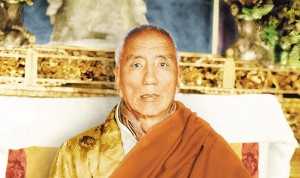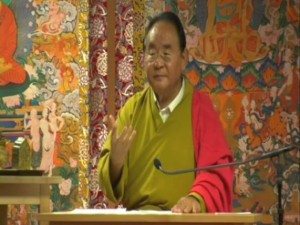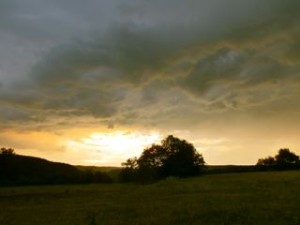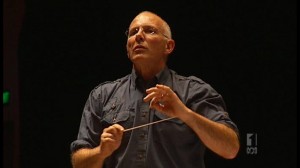Remembering the Masters
In 2009, as part of the celebrations for the 50th anniversary of the passing of Jamyang Khyentse Chökyi Lodrö, some of Sogyal Rinpoche’s long-time students offered this beautiful short film on “the master of masters”.
Volker Dencks, Barbara Lepani, and Stéphane Lun-Sin, gathering years of research on the life of Jamyang Khyentse Chökyi Lodrö, including journeys to the varied corners of the world to collect testimonies from the masters who knew him, assembled this labour of love and devotion.
In article published in View: the Rigpa Journal in 2009, in a special tribute issue devoted to the life and legacy of Jamyang Khyentse, Volker Dencks and Barabara Lepani wrote of their project and what they learned about this master along the way:
For the past years, a group of Rigpa students has been researching the life of Jamyang Khyentse Chökyi Lodrö. We have delved into the archives to bring together Sogyal Rinpoche’s many intimate recollections of his childhood with Jamyang Khyentse, who raised him like a son. We have scoured the written accounts of other masters and scholars for details of Jamyang Khyentse’s life, and our own interviews with his surviving disciples have taken us to Tibet, India, Sikkim, Nepal, the USA, the UK, France and Spain. Most recently, we have begun to make contact with some of the Chinese Buddhist students who travelled to Tibet to study with Tibetan masters during the time of Jamyang Khyentse. So far, we have interviewed about fifty of his disciples, and others who knew him well.
Our research, which we aim to share more fully in the future, has borne out, again and again, how this ‘master of masters’ was regarded with the very deepest respect and devotion by followers of all of the Buddhist traditions of Tibet. Jamyang Khyentse Chökyi Lodrö was a legend in Tibet and the Himalayas, but has been less well-known in the western world. Yet what becomes steadily clearer from our research is the huge influence he had on the spread of Tibetan Buddhism not only in the East, but also in the West. We hope in some small way to bring the attention of a wider audience to this extraordinary master, who must rank as one of the greatest saints of the twentieth century in any of the spiritual traditions of the world.

You can read the complete View: The Rigpa Journal article online here.
For more information about this project Remembering the Masters, please see their blog here, which contains some wonderful posts of many stories about the life and times of Jamyang Khyentse Chökyi Lodrö.
This The Tibetan Blog of Living and Dying post is part of a series, also called Remembering the Masters, featuring short teachings and stories about Sogyal Rinpoche’s masters. Further videos in this series will be presented over the coming weeks.
You can find older posts on our videos page.
Alan Walace on The Tibetan Book of Living and Dying
 Dr. B Alan Wallace, a well-known scholar and practitioner of Buddhism since 1970, comments on the 20th anniversary of Sogyal Rinpoche’s book: “Since it was published twenty years ago, Sogyal Rinpoche’s The Tibetan Book of Living and Dying has earned its status as a modern classic of Tibetan Buddhism. Filled with personal narratives and the rich wisdom of the Tibetan Buddhist tradition as a whole, this beautifully written book is one I have recommended widely to Dharma students the world over. It is such an authoritative work that I also made it required reading when I taught Tibetan Buddhism during my years as a lecturer at the University of California. I’m sure that it will continue to be of great benefit in the years and decades to come.”
Dr. B Alan Wallace, a well-known scholar and practitioner of Buddhism since 1970, comments on the 20th anniversary of Sogyal Rinpoche’s book: “Since it was published twenty years ago, Sogyal Rinpoche’s The Tibetan Book of Living and Dying has earned its status as a modern classic of Tibetan Buddhism. Filled with personal narratives and the rich wisdom of the Tibetan Buddhist tradition as a whole, this beautifully written book is one I have recommended widely to Dharma students the world over. It is such an authoritative work that I also made it required reading when I taught Tibetan Buddhism during my years as a lecturer at the University of California. I’m sure that it will continue to be of great benefit in the years and decades to come.”
Dr Wallace is a dynamic lecturer, progressive scholar, and one of the most prolific writers and translators of Tibetan Buddhism in the West, who continually seeks innovative ways to integrate Buddhist contemplative practices with Western science to advance the study of the mind. A scholar and practitioner of Buddhism since 1970, he has taught Buddhist theory and meditation worldwide since 1976. Dr. Wallace devoted fourteen years to training as a Tibetan Buddhist monk ordained by H. H. the Dalai Lama, and went on to earn an undergraduate degree in physics and the philosophy of science at Amherst College and a doctorate in religious studies at Stanford.
What is your story about The Tibetan Book of Living and Dying? To share it, follow this link: Share your story.
Unblocking Our Capacity for Love and Compassion
At times, due to our own history of pain and trauma, when we are faced with the suffering of loved ones and others around us, we may experience that the love and compassion we would like to show them is blocked and inaccessible. How then can we reconnect with our innate capacity for that love and compassion, and our ability to to care for them in the way would most wish in our heart of hearts?
One of the great impacts that the publication The Tibetan Book of Living Dying had was through introducing the wider world to the practice of Tonglen, a practice for developing compassion through taking on the suffering and pain of others, and giving them your happiness, wellbeing, and peace of mind.
Yet as Sogyal Rinpoche explained in Chapter 12, Compassion: The Wish-fulfilling Jewel:
Before you can truly practice Tonglen, you have to be able to evoke compassion in yourself. That is harder than we often imagine, because the sources of our love and compassion are sometimes hidden from us, and we may have no ready access to them. Fortunately there are several special techniques that the Buddhist “training of the mind” in compassion has developed to help us evoke our own hidden love.
In this teaching, Rinpoche explains one of these techniques, that of considering others the same as ourselves, and how it prepares us for the actual practice of Tonlgen which is explained in Chapter 12.
For further teachings by Rinpoche on training the mind in compassion, please visit SogyalRinpoche.org.
Finding Sogyal Rinpoche
 A woman from San Diego in the USA shares her story: “I am 62 years old, and have practiced some form of Buddhism since I was 21. I Married a Buddhist, and brought up 3 daughters in the Buddhist philosophy and practice. However for 7 years, after my husband died in 1994, I wandered totally depleted in faith. Read More
A woman from San Diego in the USA shares her story: “I am 62 years old, and have practiced some form of Buddhism since I was 21. I Married a Buddhist, and brought up 3 daughters in the Buddhist philosophy and practice. However for 7 years, after my husband died in 1994, I wandered totally depleted in faith. Read More
A Symphony of Living and Dying
When award winning music composer, performer and conductor Nigel Westlake from Australia, lost his 21 year old son Eli in 2008 in a tragic murder, he was devastated with grief. After many years of successful composition and performance, he wasn’t sure how he would be able to carry on his musical career. Read More

